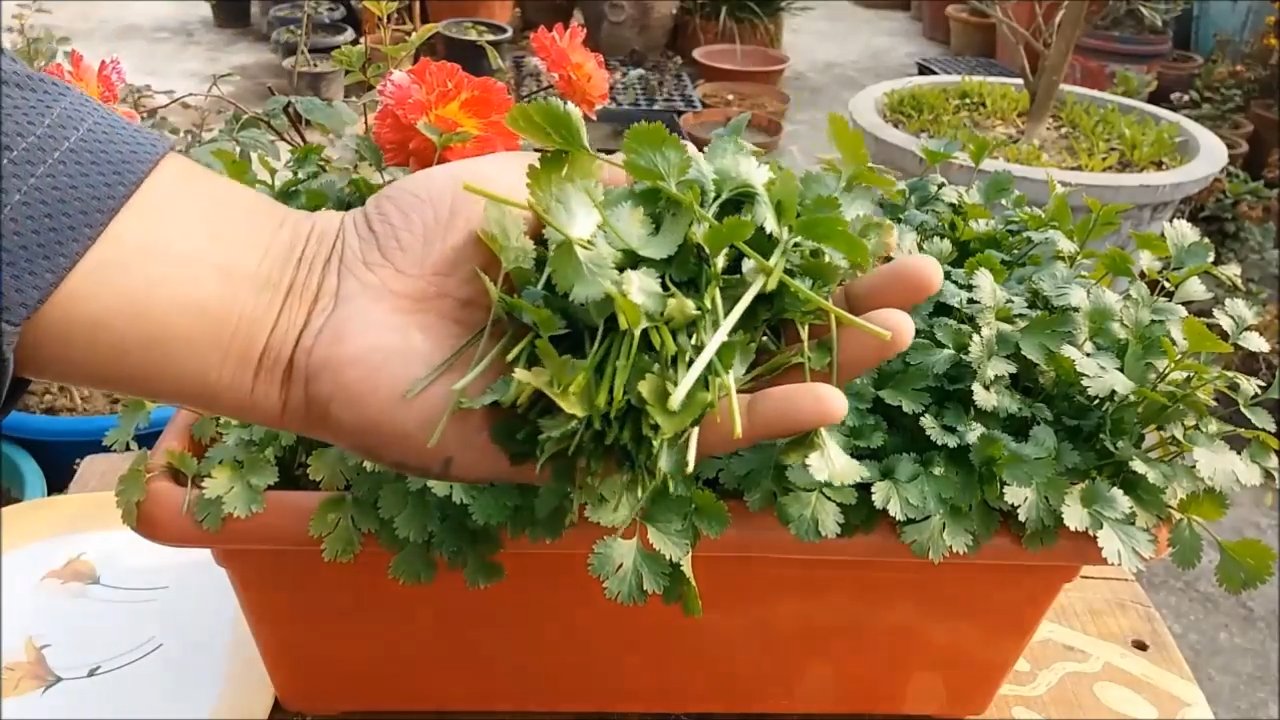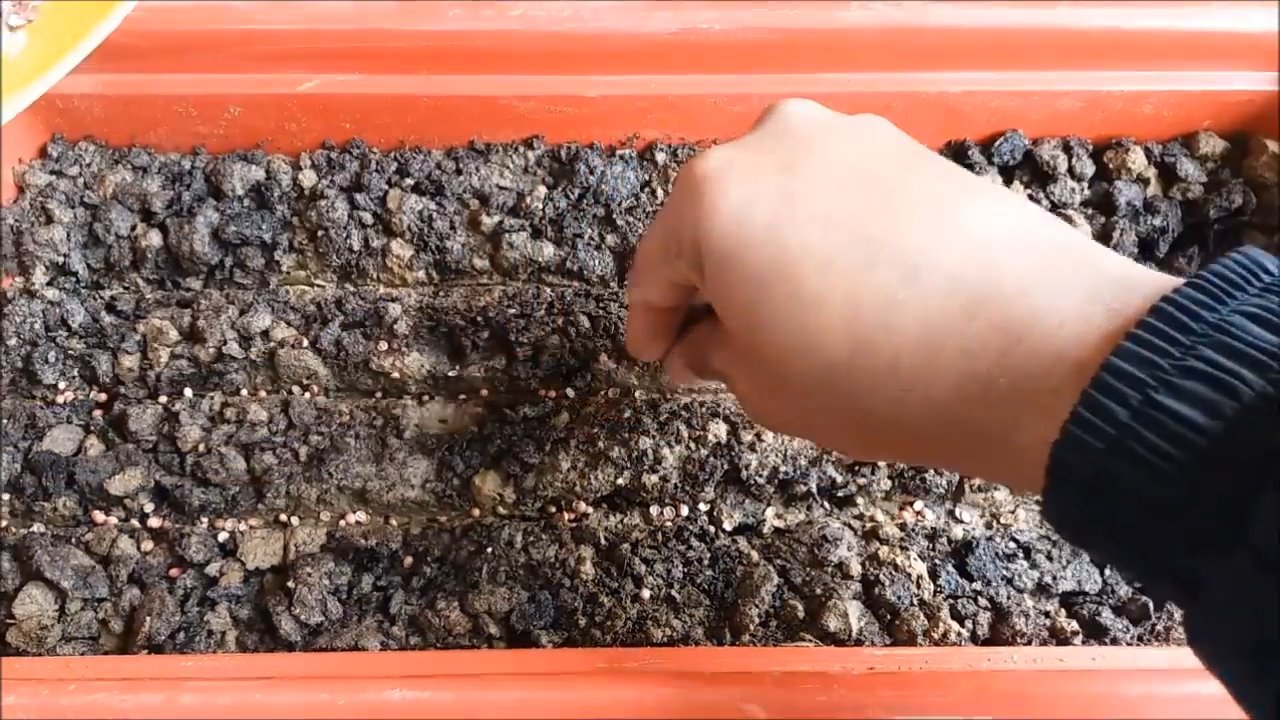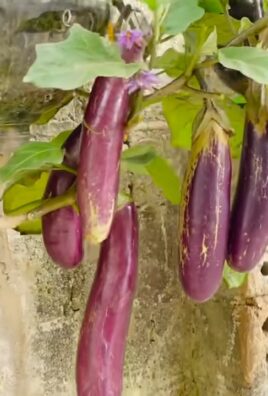Growing Cilantro Indoors can seem like a daunting task, but trust me, with a few simple tricks, you can have a thriving herb garden right on your windowsill! Imagine fresh, vibrant cilantro always at your fingertips, ready to add a burst of flavor to your tacos, salsas, and guacamole. No more sad, wilted bunches from the grocery store!
Cilantro, also known as coriander in some parts of the world, has a rich history dating back thousands of years. Evidence suggests it was used in ancient Egypt and even found in the tomb of Tutankhamun! For centuries, cultures around the globe have cherished cilantro for its culinary and medicinal properties. Now, you can easily bring this ancient herb into your modern home.
Why bother learning how to grow cilantro indoors? Well, for starters, it’s incredibly convenient. Having fresh herbs readily available elevates your cooking and adds a touch of freshness to your meals. Plus, let’s be honest, store-bought cilantro can be expensive and often goes bad before you even get a chance to use it all. This DIY guide will provide you with all the essential tips and tricks to successfully growing cilantro indoors, saving you money and ensuring you always have a supply of this delicious herb. I’m excited to share my secrets with you, so let’s get started!

Growing Cilantro Indoors: A Beginner’s Guide to Fresh Herbs Year-Round
Hey there, fellow herb enthusiasts! Ever crave fresh cilantro in the middle of winter? Or maybe you just want a convenient supply right in your kitchen? Well, you’re in the right place! I’m going to walk you through everything you need to know to successfully grow cilantro indoors. It’s easier than you think, and the reward of having fresh, flavorful cilantro at your fingertips is totally worth it.
What You’ll Need: Your Cilantro Growing Arsenal
Before we dive in, let’s gather our supplies. Here’s a checklist of everything you’ll need to get started:
* **Cilantro Seeds:** You can find these at most garden centers or online. Look for varieties specifically suited for container gardening, if possible.
* **Potting Mix:** Don’t use garden soil! It’s too heavy and doesn’t drain well. Opt for a high-quality potting mix designed for containers. I personally like mixes that contain peat moss, perlite, and vermiculite for good drainage and aeration.
* **Pots:** Choose pots that are at least 6 inches deep and have drainage holes. Cilantro has a taproot, so depth is important. You can use terracotta or plastic pots – whatever you prefer.
* **Grow Lights (Optional but Recommended):** While cilantro can grow indoors with natural light, it often gets leggy and weak without supplemental lighting, especially during the winter months. A simple LED grow light can make a huge difference.
* **Watering Can or Spray Bottle:** For gentle watering.
* **Small Shovel or Trowel:** For planting the seeds.
* **Seed Starting Tray (Optional):** If you prefer to start your seeds indoors before transplanting.
* **Fertilizer (Optional):** A balanced liquid fertilizer can help boost growth, but it’s not essential.
Step-by-Step: Planting Your Cilantro Seeds
Okay, let’s get our hands dirty! Here’s how to plant your cilantro seeds:
1. **Prepare Your Pots:** Fill your pots with potting mix, leaving about an inch of space at the top. Gently pat down the soil to remove any large air pockets.
2. **Sow the Seeds:** Cilantro seeds are relatively large, making them easy to handle. You can either broadcast the seeds (sprinkle them evenly over the surface) or plant them in rows. I prefer planting in rows because it makes it easier to thin out the seedlings later. If planting in rows, make shallow furrows about 1/4 inch deep and space them about 1-2 inches apart.
3. **Space the Seeds:** Whether you broadcast or plant in rows, aim for a spacing of about 1/2 inch between seeds. Cilantro doesn’t like to be overcrowded.
4. **Cover the Seeds:** Gently cover the seeds with a thin layer of potting mix.
5. **Water Thoroughly:** Use a watering can or spray bottle to gently water the soil until it’s evenly moist. Be careful not to overwater, as this can cause the seeds to rot.
6. **Provide Light and Warmth:** Place your pots in a warm location with plenty of light. If you’re using grow lights, position them about 6-12 inches above the soil surface. Cilantro germinates best at temperatures between 65-75°F (18-24°C).
7. **Be Patient:** Cilantro seeds typically germinate in 7-10 days, but it can sometimes take longer. Keep the soil consistently moist during this time.
Nurturing Your Cilantro: Light, Water, and Care
Once your cilantro seedlings emerge, it’s time to focus on providing them with the right conditions to thrive.
1. **Light:** Cilantro needs at least 6 hours of sunlight per day. If you’re growing it indoors, a grow light is highly recommended. Position the light so that it provides even coverage to all the seedlings. I usually keep my grow lights on for about 12-14 hours a day.
2. **Watering:** Water your cilantro regularly, keeping the soil consistently moist but not soggy. Overwatering can lead to root rot, so it’s important to let the top inch of soil dry out slightly between waterings. Check the soil moisture by sticking your finger into the soil. If it feels dry, it’s time to water.
3. **Thinning:** Once your seedlings have developed a few sets of true leaves (the leaves that look like miniature cilantro leaves), it’s time to thin them out. This means removing some of the seedlings to give the remaining ones more space to grow. Thin the seedlings so that they are about 2-3 inches apart. Don’t just pull them out! Gently snip them off at the soil line with scissors to avoid disturbing the roots of the remaining plants.
4. **Fertilizing (Optional):** If you want to give your cilantro a boost, you can fertilize it every 2-3 weeks with a balanced liquid fertilizer diluted to half strength. Follow the instructions on the fertilizer label. I personally don’t fertilize mine very often, but it can help if your cilantro is looking pale or growing slowly.
5. **Pinching:** Pinching back the tips of the stems encourages bushier growth. This means snipping off the top set of leaves on each stem. This will also delay bolting (going to seed), which can make the cilantro taste bitter.
6. **Temperature:** Cilantro prefers cooler temperatures, ideally between 60-75°F (15-24°C). Avoid placing your cilantro near heat sources, such as radiators or vents.
Harvesting Your Cilantro: Enjoying the Fruits (or Leaves!) of Your Labor
The best part of growing cilantro is, of course, harvesting it! Here’s how to harvest your cilantro for the best flavor and yield:
1. **When to Harvest:** You can start harvesting cilantro leaves when the plants are about 6 inches tall.
2. **How to Harvest:** Use scissors or pruning shears to cut the stems about an inch above the soil line. This will encourage the plant to produce more leaves.
3. **Harvest Regularly:** The more you harvest, the more the plant will produce. Regular harvesting also helps to prevent bolting.
4. **Bolting:** Cilantro is prone to bolting, especially in hot weather. Bolting is when the plant sends up a flower stalk and the leaves become bitter. If your cilantro starts to bolt, you can still harvest the leaves, but they won’t taste as good. You can also try pinching off the flower stalks to delay bolting.
5. **Succession Planting:** To ensure a continuous supply of cilantro, sow new seeds every 2-3 weeks. This is called succession planting.
Troubleshooting: Common Cilantro Problems and Solutions
Even with the best care, you might encounter some problems while growing cilantro indoors. Here are some common issues and how to address them:
* **Leggy Growth:** This is when the cilantro stems become long and spindly, with few leaves. It’s usually caused by insufficient light. Solution: Provide more light, either with a grow light or by moving the plant to a sunnier location.
* **Yellowing Leaves:** This can be caused by overwatering, underwatering, or nutrient deficiencies. Solution: Check the soil moisture and adjust your watering accordingly. If the soil is consistently moist, you’re probably overwatering. If the soil is dry, you’re probably underwatering. You can also try fertilizing with a balanced liquid fertilizer.
* **Root Rot:** This is a fungal disease that causes the roots to rot. It’s usually caused by overwatering. Solution: Let the soil dry out completely between waterings. You may also need to repot the plant in fresh potting mix.
* **Pests:** Cilantro is relatively pest-resistant, but it can sometimes be affected by aphids or spider mites. Solution: Inspect your plants regularly for pests. If you find any, you can try spraying them with insecticidal soap or neem oil.
* **Bolting:** As mentioned earlier, bolting is when the plant sends up a flower stalk and the leaves become bitter. Solution: Pinch off the flower stalks to delay bolting. You can also try growing cilantro in a cooler location.
Extra Tips for Cilantro Success
Here are a few extra tips to help you grow the best cilantro possible:
* Choose the Right Variety: Some cilantro varieties are more heat-tolerant than others. If you live in a warm climate, choose a heat-tolerant variety to help prevent bolting.
* Use Well-Draining Soil: Cilantro doesn’t like to sit in soggy soil. Make sure your potting mix is well-draining.
* Rotate Your Crops: If you’re growing cilantro in the same pot year after year, the soil can become depleted of nutrients. Rotate your crops by growing different herbs in the pot each year.
* Don’t Overcrowd: Give your cilantro plants plenty of space to grow. Overcrowding can lead to leggy growth and other

Conclusion
So, there you have it! Growing cilantro indoors isn’t just a whimsical dream for those of us craving fresh herbs year-round; it’s a genuinely achievable reality. We’ve walked through the simple steps, from selecting the right container and soil to providing adequate light and water. But why is this DIY trick a must-try? Because it puts the power of fresh, flavorful cilantro directly into your hands, regardless of the season or your access to a sprawling garden.
Imagine the possibilities! No more wilted, sad-looking cilantro from the grocery store. No more last-minute dashes to the market when you realize you’re out. Instead, you’ll have a vibrant, fragrant supply of this essential herb, ready to elevate your tacos, salsas, soups, and countless other dishes. The taste difference alone is worth the effort. Freshly harvested cilantro bursts with a bright, citrusy flavor that simply can’t be matched by its store-bought counterpart.
Beyond the convenience and superior flavor, growing cilantro indoors offers a therapeutic benefit. Nurturing a plant, watching it grow, and harvesting its bounty can be incredibly rewarding and stress-relieving. It’s a small connection to nature that can make a big difference in your daily life.
But don’t stop there! Experiment with different varieties of cilantro. Some are known for their slower bolting tendencies, making them ideal for indoor growing. Try ‘Slow Bolt’ or ‘Santo’ cilantro for a longer harvest period. You can also explore different container sizes and materials. Terracotta pots, for example, can help regulate moisture levels, while self-watering containers can simplify the watering process.
Consider companion planting as well. Basil, for instance, is said to deter pests that might bother your cilantro. A small pot of basil alongside your cilantro could create a mutually beneficial environment.
And if you’re feeling adventurous, try succession planting. Sow new seeds every few weeks to ensure a continuous supply of fresh cilantro. This way, you’ll never be without your favorite herb.
The key to successful indoor cilantro growing is consistent care and attention. Keep a close eye on your plants, adjust your watering schedule as needed, and provide them with plenty of light. Don’t be afraid to experiment and learn from your mistakes. Every gardener, even the most experienced, has their share of trial and error.
We wholeheartedly encourage you to give this DIY trick a try. It’s a simple, affordable, and incredibly rewarding way to bring the taste of summer into your home, no matter the season. And once you’ve experienced the joy of harvesting your own fresh cilantro, we’re confident you’ll be hooked.
So, grab your seeds, your soil, and your favorite pot, and get ready to embark on your indoor cilantro growing adventure. We can’t wait to hear about your experiences! Share your tips, your successes, and even your challenges in the comments below. Let’s create a community of indoor cilantro enthusiasts and help each other grow the best cilantro possible. Let us know what growing cilantro indoors has done for you.
Frequently Asked Questions (FAQ)
1. What is the best type of cilantro to grow indoors?
While any cilantro variety can technically be grown indoors, some are better suited for it than others. Varieties labeled as “slow bolt” are generally preferred because they are less likely to prematurely go to seed (bolt), which makes the leaves bitter and ends the harvest. ‘Slow Bolt’ and ‘Santo’ are excellent choices for indoor growing. These varieties are bred to withstand warmer temperatures and longer days, which can trigger bolting in other cilantro types. Regular cilantro can be grown, but you’ll need to be more vigilant about temperature control and harvesting frequently.
2. How much light does indoor cilantro need?
Cilantro needs a significant amount of light to thrive indoors. Ideally, it requires at least 6-8 hours of direct sunlight per day. If you don’t have a sunny windowsill that provides this much light, you’ll need to supplement with artificial lighting. LED grow lights are an excellent option because they are energy-efficient and provide the full spectrum of light that plants need. Position the grow light a few inches above the cilantro plants and keep it on for 12-14 hours per day. Insufficient light will result in leggy, weak plants with pale leaves.
3. What kind of soil is best for growing cilantro indoors?
Cilantro prefers well-draining soil that is rich in organic matter. A good potting mix specifically formulated for herbs or vegetables is ideal. Avoid using garden soil, as it can be too heavy and may not drain properly. You can also amend your potting mix with compost or other organic matter to improve its fertility and drainage. The soil should be slightly acidic to neutral, with a pH between 6.0 and 7.0.
4. How often should I water my indoor cilantro?
Watering frequency depends on several factors, including the size of the container, the type of soil, and the temperature and humidity of your home. As a general rule, water your cilantro when the top inch of soil feels dry to the touch. Avoid overwatering, as this can lead to root rot. Make sure the pot has drainage holes to allow excess water to escape. During the warmer months, you may need to water more frequently than during the cooler months.
5. How do I prevent my cilantro from bolting indoors?
Bolting is a common problem with cilantro, especially in warm conditions. To prevent bolting indoors, keep the temperature relatively cool (around 60-70°F), provide adequate light, and harvest the leaves regularly. Pinch off any flower buds as soon as you see them. Choosing a slow-bolt variety, as mentioned earlier, is also crucial. Ensure adequate watering, as drought stress can also trigger bolting.
6. When can I start harvesting my indoor cilantro?
You can start harvesting cilantro leaves once the plants are about 6 inches tall. Harvest by snipping off the outer leaves, leaving the inner leaves to continue growing. This will encourage the plant to produce more leaves. Avoid harvesting more than one-third of the plant at a time, as this can stress the plant and slow down its growth.
7. How do I deal with pests on my indoor cilantro?
Indoor cilantro is generally less susceptible to pests than outdoor cilantro, but it can still be affected by aphids, spider mites, or whiteflies. Inspect your plants regularly for signs of pests. If you find any, you can try washing them off with a strong stream of water or using insecticidal soap. Avoid using harsh chemicals, as these can harm the plants and make them unsafe to eat.
8. Can I grow cilantro from seed indoors?
Yes, growing cilantro from seed indoors is relatively easy. Sow the seeds directly into the potting mix, about ¼ inch deep. Keep the soil moist but not soggy. The seeds should germinate in about 7-10 days. Once the seedlings emerge, thin them out so that they are spaced about 2-3 inches apart.
9. How long will my indoor cilantro plant last?
Cilantro is an annual herb, meaning it completes its life cycle in one growing season. However, with proper care, you can extend its lifespan indoors. Regular harvesting, adequate light, and cool temperatures will help to keep your cilantro plant productive for several months. Once the plant starts to bolt, it will eventually die. At that point, you can start a new plant from seed.
10. Can I transplant outdoor cilantro indoors?
While it’s possible to transplant outdoor cilantro indoors, it’s generally not recommended. Outdoor cilantro plants are often stressed by the transplanting process and may not adapt well to indoor conditions. It’s better to start with fresh seeds indoors to ensure a healthy and productive plant. If you do decide to transplant, choose a young, healthy plant and carefully dig it up, taking care to preserve as much of the root system as possible.




Leave a Comment